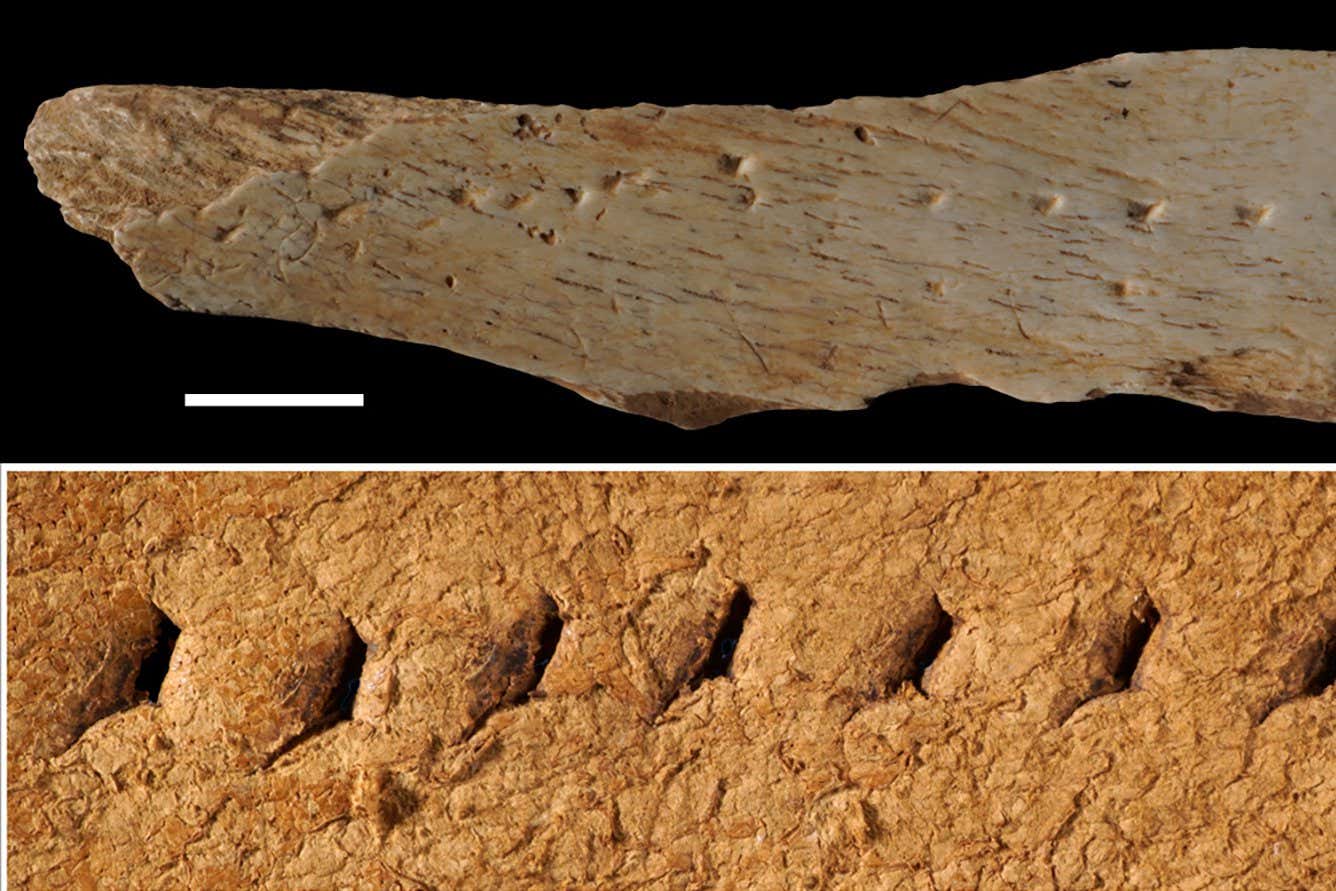A recent study has revealed evidence of early Homo sapiens in Europe using leather clothing to survive frigid temperatures approximately 39,000 years ago. This significant find sheds light on the early technology of clothing, which is often difficult to study due to its perishable nature.
The study, led by Luc Doyon at the University of Bordeaux in France, analyzed a 39,600-year-old bone discovered at the Terrasses de la Riera dels Canyars site near Barcelona, Spain. The bone, believed to be from a large mammal like a horse or bison, exhibited 28 puncture marks on its surface, including a linear sequence of 10 holes spaced about 5 millimeters apart. Other puncture marks were randomly positioned.
What caught the researchers’ attention was the intriguing pattern of puncture marks on the bone. It did not resemble typical decorative or tally markings found on prehistoric objects. Further microscopic analysis revealed that the line of 10 indents was made by one tool, while the remaining punctures were made by five different tools. This discovery raised questions about the purpose of the different arrangements on the same bone.
To understand how these indents were made, the researchers employed experimental archaeology, a technique that involves using ancient tools to replicate marks on objects. Through experimentation, they found that the only way to recreate the specific indents on the Canyars bone was by using a chisel-like stone tool, known as a burin, to pierce through thick hide. This technique, called indirect percussion, is still used by cobblers and in traditional societies for leatherwork.
Based on their findings, the researchers propose that the bone indents were made during the manufacture or repair of leather items. The punctures allowed for the insertion of a thread, which could then be used to create tight seams in the leather.
This discovery is significant as it provides indirect evidence of clothing from the Pleistocene era. Prior to this finding, there were no direct remains of clothing from that time period, with the oldest surviving cloth fragments dating back only 10,000 years. Discovering evidence of fitted clothing is particularly intriguing, as it raises questions about how early humans in Europe created garments without the use of eyed needles, which were not found in the region until approximately 26,000 years ago.
Luc Doyon considers this discovery a valuable contribution to our knowledge of early clothing-making techniques. He explains that it offers insight into the ability to create fitted clothing using alternative methods.
This find is also significant due to its timing and location. The bone was discovered in southern Europe nearly 40,000 years ago, shortly after the arrival of Homo sapiens and during a period of rapid climate change. This suggests that the need for protective clothing was crucial for early humans to adapt and survive in new regions.
The researchers argue that the punch board, the bone with puncture marks, may have been part of a repair kit discovered at the Canyars site.








